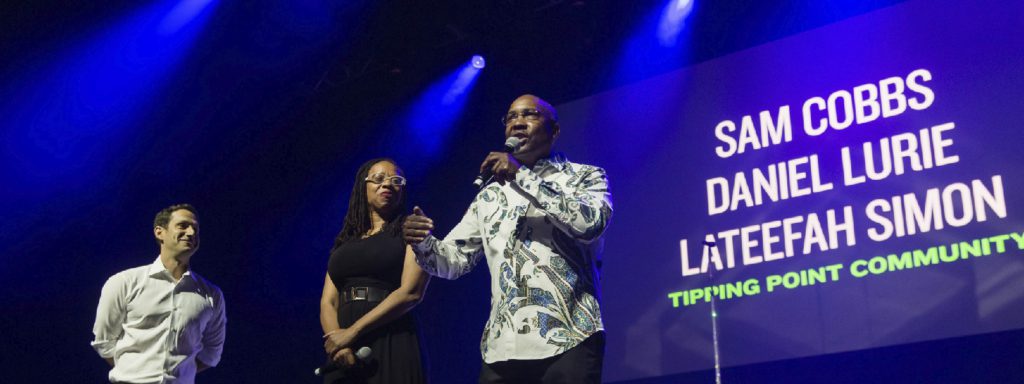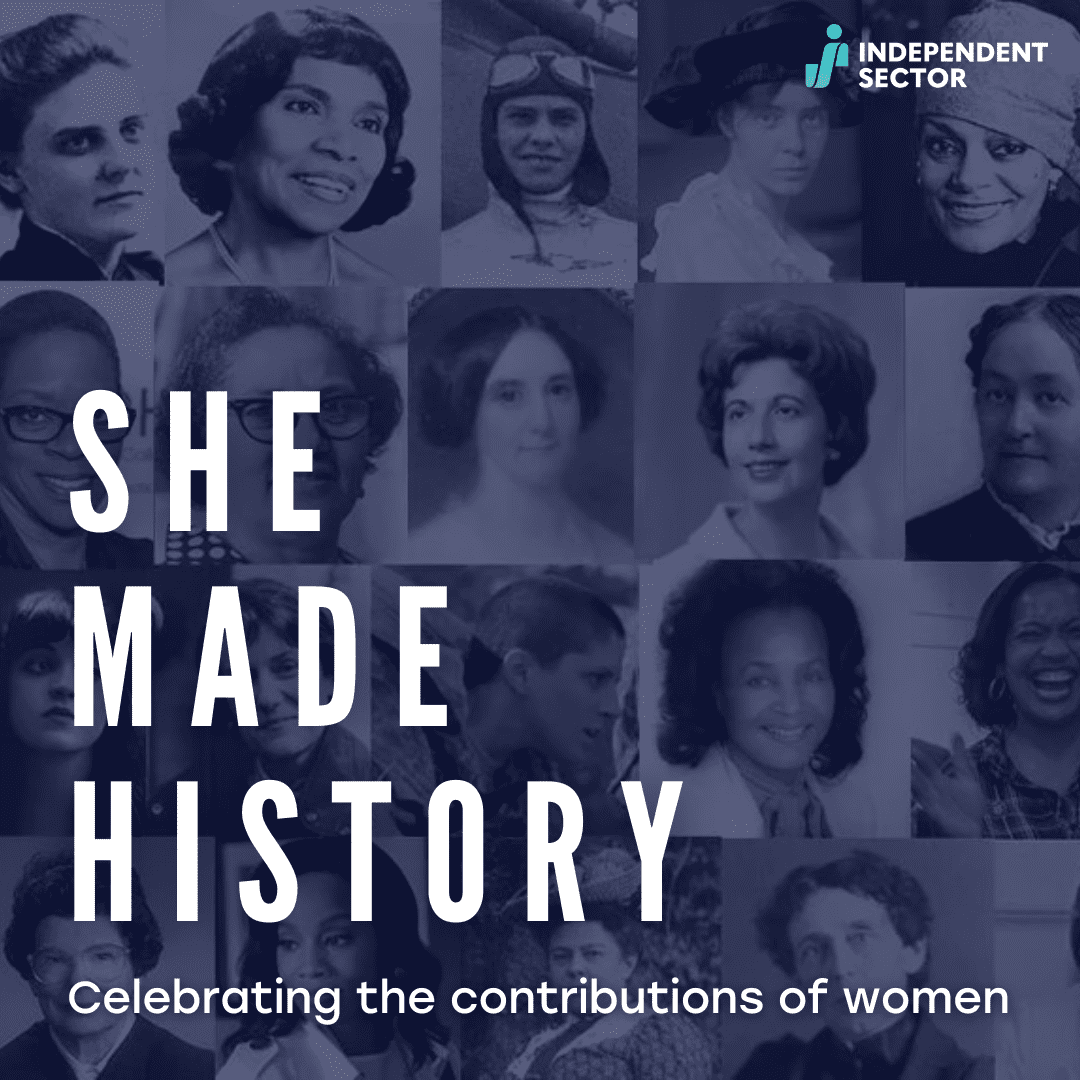IS members represent nonprofits, foundations, and corporations engaged in every kind of charitable endeavor, with missions that reflect the nearly infinite ways of working for the common good. New member Tipping Point Community is a nonprofit support system for the organizations that serve as the Bay Area community’s safety net.
We had the opportunity to talk with Sam Cobbs, chief executive officer of Tipping Point Community.
Tell us a little bit about your career path and how you arrived at your present position.
SC: My first job in California was working for the Parks & Rec department in Richmond. It’s there that I realized I could get paid to do good work in the community. Growing up in Mississippi, that kind of work would have been a volunteer gig – but in California, there were actual opportunities for me to turn “doing good” into a career. After a couple years at Parks & Rec, I moved on to the Boys & Girls Club and then Larkin Street Youth Services, where I helped open the first emergency shelter for young adults in San Francisco.
My role at Larkin helped prepare me for my first executive position as CEO of First Place for Youth. I started there in 2005. One of my very first weeks on the job, I met with Daniel Lurie who was CEO of Tipping Point at the time (he’s the founder and current Board Chair). It was the start of a 12 year, close partnership that helped me grow as a leader, helped First Place grow as an organization, and helped us tap into greater resources for foster youth in California. After 12 years at First Place, I made the jump to Tipping Point where I serve as the CEO.
What does some of your typical work at Tipping Point include? Was there a day you remember that was extraordinary or special?
SC: I’m only the second CEO that Tipping Point has had. While a CEO transition can mean a lot of changes, there’s one thing that won’t change – and that’s the trust we put into our grantees. We have a portfolio of 50+ grantees in education, housing, employment, and early childhood development – all of which are working toward alleviating poverty in the Bay Area. Our mission is to advance the most promising poverty-fighting solutions in the region. Of course, financial investment is one of the primary ways that we partner with these groups, but we can’t make progress through dollars alone. We’re at the table with these organizations, celebrating wins, but perhaps more importantly, identifying challenge areas and working alongside them to improve so they can achieve greater impact.
One of my most memorable days on the job was during this past summer. It was early June and the country was widely protesting police brutality against Black Americans, sparked by the murder of George Floyd. It was the first time I was faced with a decision as CEO: how to respond to a cultural moment that was also so deeply personal. I was balancing what made sense to say or do as CEO of Tipping Point, and also what made sense for me as a Black man in America. It wasn’t enough to just make an empty statement. I decided that the best action to take was actually to step back, and to ask our donor community to support groups in this moment who are closer to grassroots, social justice work than we are. It was the first time Tipping Point had pointed our gifts elsewhere. To me, it showed we’re an organization that walks the walk and talks the talk. It was authentic and that’s what we always strive to be at Tipping Point.
What are some of the challenges you face in your organization and how have you responded to them?
SC: When you’re a poverty-fighting organization, it’s hard to resist the urge to try and solve every challenge that comes your way. It’s difficult to pick and choose, to stay focused, and remain strategic when you know that each decision means someone will, and someone won’t, have a better chance of breaking the cycle of poverty. Over the last few years, we’ve had to make difficult decisions in order to stay focused and on strategy. It’s meant working toward clearer impact targets and ending some relationships with grantees who are incredible, but don’t align with the direction we’re headed. That’s never easy – especially for an organization that prides itself on relationships.
Briefly describe some of the programs or services your organization runs.
SC: One of the areas of our work that I think makes us unique is the emphasis we put on building the capacity of the organizations in our portfolio. This is the type of investment that goes “beyond the dollar,” by investing time, energy, and resources into helping the staff and leaders of these nonprofits become even better at what they do. Over the course of the year, we offer around two dozen workshops; we connect grantees that have similar areas of growth to participate in multiple learning sessions on topics such as leadership development, impact, or fundraising; we introduce grantees to best-in-class partners to consult on projects with specific deliverables related to organizational growth, and we make targeted one-time investments that increase their impact. Honestly, it’s the type of professional and organizational development that is taken for granted in a corporate environment, but just isn’t as accessible in the nonprofit world. I think it’s this type of engagement on top of trust and partnership that makes Tipping Point unique.
How are you advancing diversity, equity, and inclusion through your work?
SC: DEI is really at the center of everything we’re doing right now. We’re looking internally, externally, at our Board, at our grantees – honestly, we use a DEI lens to explore all facets of our work. For example, we know that our grantees predominantly serve clients who are people of color, and yet 30% of our grantees are led by people of color. We also know that having a staff that mirrors the community they serve often leads to more progress. So how can we make more investments in leaders of color to increase impact? We have a goal of having at least 50% of our grantees led by people of color by next fiscal year.
What are you most excited about or looking forward to in the future of your work?
SC: To me, it’s about how we can pair what Tipping Point has been known for over the last 15 years – pushing the bounds of philanthropy to have a greater impact. We’re looking at ways to leverage philanthropic investments to test new solutions to age-old societal problems. A good example of that is the work we’re doing to create 145 units of supportive housing for people experiencing homelessness. We’re using modular construction and building it in half the time and a fraction of the cost. We put up the dollars to get the project going, and are leasing it back to the City, so they’ll pay for it in the long run. It’s this type of fresh thinking that I’m excited to continue to do at Tipping Point.
What is one of your favorite places to be in your community?
SC: Honestly, right now, it’s hard to feel like you’re in community. Everything is virtual, a phone call, a zoom video chat. That said, a few months ago we held our Executive Summit and I felt our community come to life in that moment. This is typically a day-long, in-person event for the CEOs of our grantees. This year it was virtual, on zoom, and shortened. And yet, even though it was only a couple of hours, we were able to connect – nonprofit leader to nonprofit leader – to learn from one another, inspire one another, commiserate with one another. I get the most energy from seeing what our grantees are doing day in and day out. Quarantine doesn’t change that.
We also have our annual holiday breakfast on December 11. We have over 1,000 people who have RSVP’d to attend online. When I see that number of people coming together, it shows that we not only need one another (especially right now), but we are there for one another, too. If you want to get a glimpse into the work we do, join us on the 11th!
Is there an unsung hero on your team that you’d like to recognize?
SC: There’s a member of my team named Ken whom I don’t know what we’d do without. He’s a member of our finance and operations team and our IT Manager. He’s a true unsung hero because you honestly don’t interact much with Ken unless something is broken and not working. And unfortunately, that means I hardly get to connect with him because everything is always in tip-top shape. It does not escape me that it’s that way because he is working his tail off behind the scenes so that the rest of us can do the work that we do.



